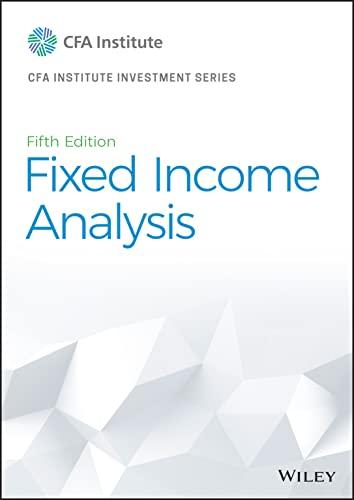A derivatives consultant, a former head of interest rate swaps trading at a major London bank, is
Question:
A derivatives consultant, a former head of interest rate swaps trading at a major London bank, is asked by a Spanish corporation to devise an overlay strategy to “effectively defease” a large debt liability. That means that there are dedicated assets to retire the debt even if both assets and the liability remain on the balance sheet. The corporation currently has enough euro-denominated cash assets to retire the bonds, but its bank advises that acquiring the securities via a tender offer at this time will be prohibitively expensive.
The 10-year fixed-rate bonds are callable at par value in three years. This is a one-time call option. If the issuer does not exercise the option, the bonds are then non-callable for the remaining time to maturity. The corporation’s CFO anticipates higher benchmark interest rates in the coming years. Therefore, the strategy of investing the available funds for three years and then calling the debt is questionable because the embedded call option might be “out of the money” when the call date arrives. Moreover, it is likely that the cost to buy the bonds on the open market at that time will still be prohibitive.
The corporation has considered a cash flow matching approach by buying a corporate bond having the same credit rating and a call structure (call date and call price) close to the corporation’s own debt liability. However, the bank working with the CFO has been unable to identify an acceptable bond. Instead, the bank suggests that the corporation buy a 10-year non-callable, fixed-rate corporate bond and use a swaption to mimic the characteristics of the embedded call option. The idea is to transform the callable bond (the liability) into a non-callable security synthetically using the swaption. Then the newly purchased non-callable bond “effectively” defeases the transformed “non-callable” debt liability.
To confirm the bank’s recommendation for the derivatives overlay, the CFO turns to the derivatives consultant, asking if the corporation should (1) buy a payer swaption, (2) buy a receiver swaption, (3) write a payer swaption, or (4) write a receiver swaption. The time frames for the swaptions correspond to the embedded call option.
They are “3y7y” contracts, an option to enter a seven-year interest rate swap in three years. The CFO also asks the consultant about the risks to the recommended swaption position.
Indicate the swaption position that the derivatives consultant should recommend to the corporation.
Step by Step Answer:






